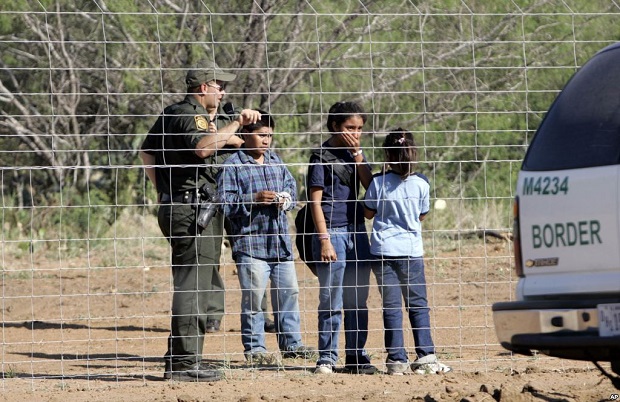Fact Sheet: Defund Militarism in the United States
March 2, 2020 - Download PDF Version

Militarism is a hallmark of U.S. policy, at home and abroad. The impacts of militarism are often invisibilized, or so deeply woven into the fabric of our society that many of us take for granted the ways in which they show up in our day-to-day lives.
Militaristic policies are meant to maintain a strong organized capacity for violence to aggressively defend or promote national interests. But from war to mass incarceration and beyond, these policies fuel the pervasive problems of systemic racism, poverty, and ecological devastation. A policy of violence has bankrupted our communities in the United States.
If we’re serious about taking on these interrelated challenges to achieve a society of care, as described in our Moral Budget report, there’s no way around transforming away from our culture of war.
Along with the Poor People's Campaign, we compiled national and state-by-state data for each of the 50 states plus Washington, DC, on how violence is institutionalized through policy in the United States. These fact sheets are meant to be used by organizers, activists, educators, students, and citizens who are interested in learning and how militarized spending priorities impact communities.
You can find all the fact sheets in the drop-down menu in the left sidebar, or at the bottom of the page if you’re viewing this website on a mobile device.
You can also find these factsheets at the Poor People's Campaign website.
Data reflects research from February 2020.
Violence as Policy in the United States
Investment in a culture of war vs. a culture of care
- Spending on detention, deportation and border patrol totaled $21.6 billion in 2018, more than six times as much as for federal homeless assistance programs ($3.5 billion).
- The prison industry cost governments $179 billion a year, including paying for prison operators, courts and policing. Only $4.5 billion (2.5%) of that total is for indigent defense.
- United States law enforcement agencies received 452,335 items worth $1 billion in surplus military equipment from the Department of Defense, such as rifles, armored vehicles, and military aircraft.
- The U.S. ranks first in the world for military spending and has the fourth highest poverty rate.
- The U.S. military budget, at $716 billion in 2018, was 30 times larger than the federal public school budget ($23.4 billion), 14 times larger than the federal housing budget ($48.2 billion), and 81 times larger than the Environmental Protection Agency budget ($8.8 billion).
- The U.S. wars in Iraq and Afghanistan have cost $6.4 trillion. It would take a full-time minimum wage worker more than 7 million lifetimes to earn that much.
- United States taxpayers will contribute $738 billion to the Pentagon and military in 2020. That money could have created 12.8 million infrastructure jobs, health care for 201 million adults, or full scholarships for every public 4-year college student in the nation. The United States awarded $342 billion in Pentagon contracts, but only $163 billion in education grants from the Department of Education.
- We could save as much as $350 billion per year and achieve true security by ending wars, reducing our aggressive posture overseas, and reining in military contracts that drain public coffers for private gain.
Lives at stake
- One in four U.S. adults has had a sibling incarcerated, one in five adults has had a parent incarcerated, and one in seven has had a child incarcerated.
- In this country, guns kill 33,000 people and injure 80,000 more each year.
- Annual deportations increased tenfold between 1976 and 2015.
- The United States has more than 1,400 Immigration and Customs Enforcement (ICE) detention facilities. From 2002 to 2018, ICE deported 4.6 million people.
- 7,010 American troops were killed in the wars in Afghanistan and Iraq, with an average age of 26. An additional 53,000 troops were wounded.
- The United States is home to 19 million veterans, making up 7.6% of the adult population. Of those, 5.4 million (18.4%) are on disability, and 37,800 were documented as homeless at a given time.
- The Iraq and Afghanistan (and beyond) wars of the last 18 years have resulted in 800,000 deaths and an estimated 21 million people displaced or forced to flee from their homes.
- There were 39,600 gun deaths in United States in 2017.
Private profit
- The top five Pentagon contractors paid their CEOs a combined $100 million. The average Pentagon contractor salary is close to $200,000, and entry level pay for a soldier is $20,172.
- In a single year, the private prison industry drew $14 billion in public funds. That would be more than enough to restore Temporary Assistance to Needy Families to its pre-1996 funding level.
- Immigration and Customs Enforcement (ICE) gave out $1.9 billion in contracts in 2018, more than the entire budget of the Meals on Wheels program that provides meal delivery to seniors.
Poverty, racism, and environmental degradation
- Poor communities experience more wartime deaths compared to high-income communities.
- Native and Indigenous people serve in the military at higher rates than other ethnicities.
- Black boys and men are 2.5 times more likely to be killed by police than white boys or men, and are ten times more likely to be killed by gun violence than White men.
- There were 2.29 million people incarcerated in United States in 2018, where Black people are incarcerated at 5.4 times the rate of White people.
- Of 1,200 contaminated Superfund sites marked for environmental clean-up in the U.S., an estimated 900 were military facilities or military support sites.
- The U.S. military spends an estimated $81 billion a year to protect the world’s oil supplies, more than twice what the U.S. has spent over the past 70 years on developing renewable energy technology.